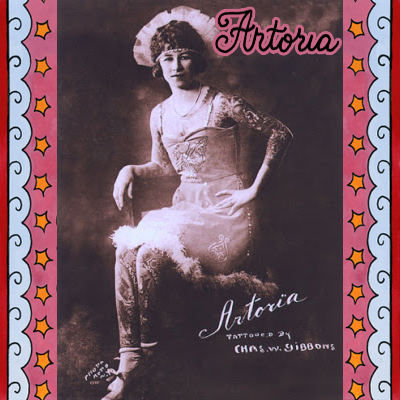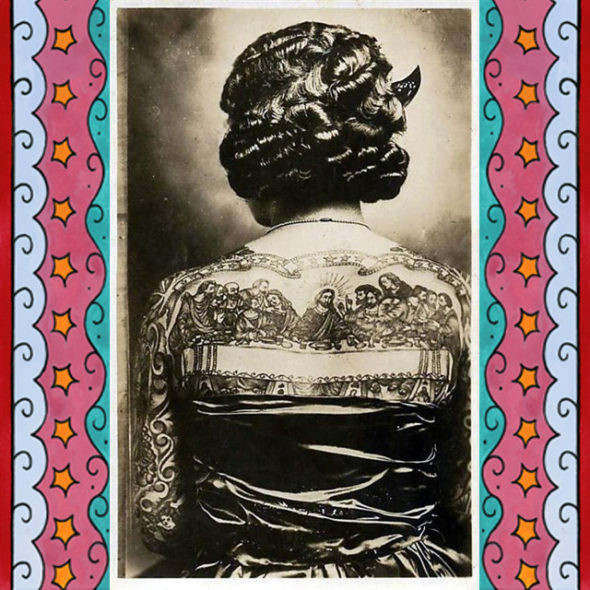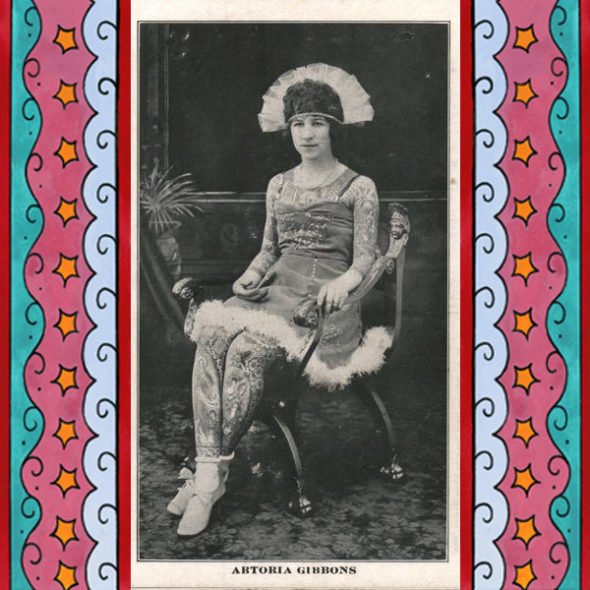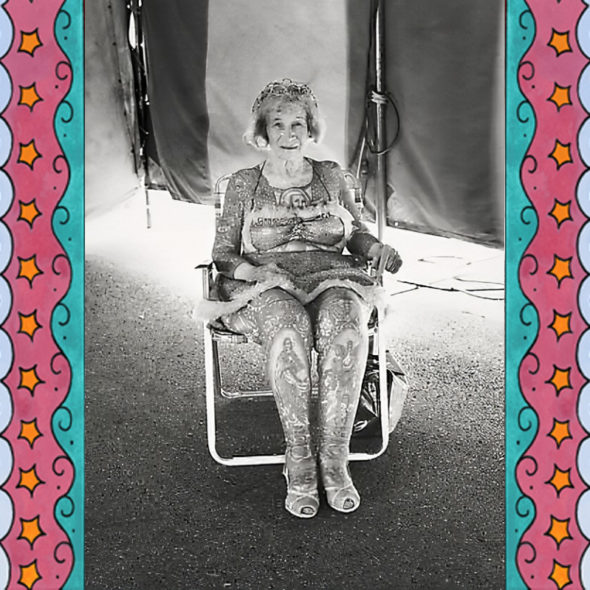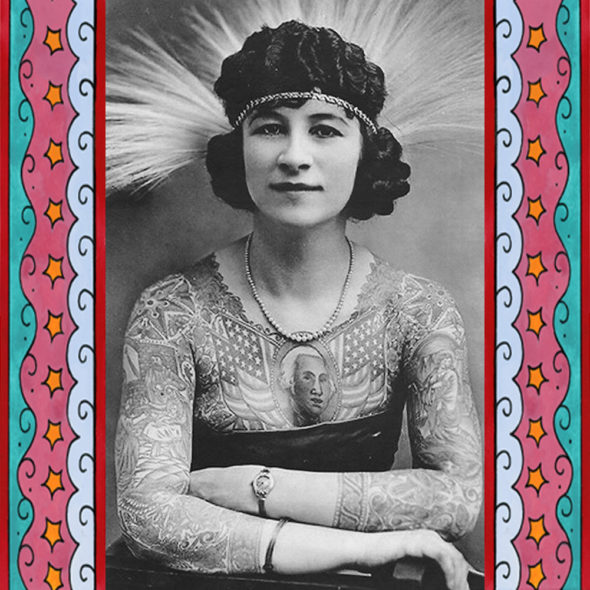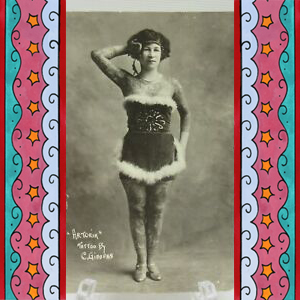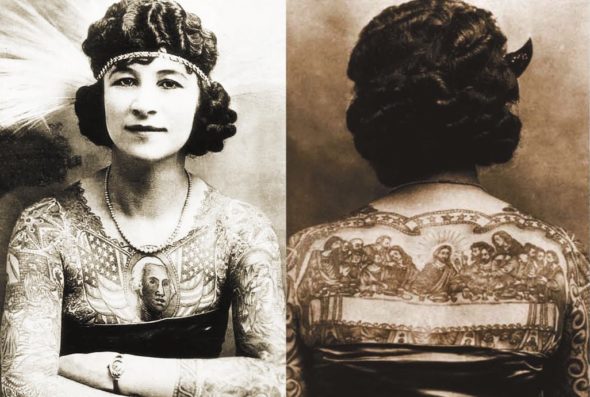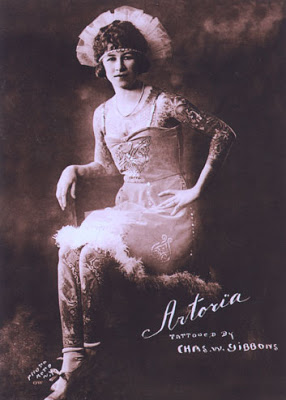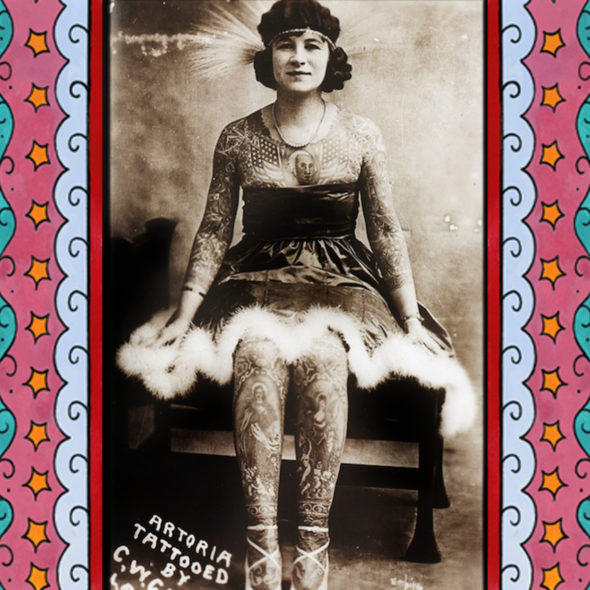Women have always been involved in modern tattooing. Some were married to tattooers, some were circus performers. Don’t let anyone lead you to beleive that this is masculine job. Women play an important part. Our bodies have been the best billboards for this art, our small gentle hands have marked the timide and the brave. Do you know the female legends of tattooing?
Artoria
Artoria is a made-up stage name for Anna Mae Burlington, born in 1893.
She was the wife of a tattooer. She married her tattoo artist husband in 1912. We get the impression that she got tattooed for love, to promote his work and to bring a little extra money into their household.
Charles ‘Red’ Gibbons, was incredibly talented with a tattoo machine, which is evident in the beautiful work he did on his wife ‘Artoria’. Among some of the incredible illustrations that she wore, she had many religious tattoos. We know that this was a real expression of her faith in the Episcopalian church. She had the last supper by Michelangelo tattooed on her back. The last supper was a popular motif with other tattooed ladies, like Emma de Burgh.
One of my favorite tattoos ‘Artoria’ had were the stars with butterflies tattooed on her shoulders. She also sported many patriotic tattoos like American flags and George Washington’s portrait tattooed on her chest. I assume that her choice was because she came from Spokane, in the state of Washington.
Photos of her show her to be a sweet and wholesome, classy woman, her knees always touching, looking proud, relaxed and almost regal. A true tattooed queen, she was the last professional tattooed lady.
In the seventies her manager told a salacious story about how she was tattooed by her jealous husband, as a way to mark her as his and discourage other men from interest in her. ‘Artoria’ didn’t like this distortion of the facts, but it seems that her manager continued to sell this story regardless. This angers me to know that he would do this against her will. It must have been sad for her to hear him say those things about ‘Red’ Gibbons, the love of her life. But the circus was show business and sideshows were seedy places in the seventies. Her manager knew what story would bring in the customers. Many other tattooed lady performers in the past also used fabricated stories, to entice the public.
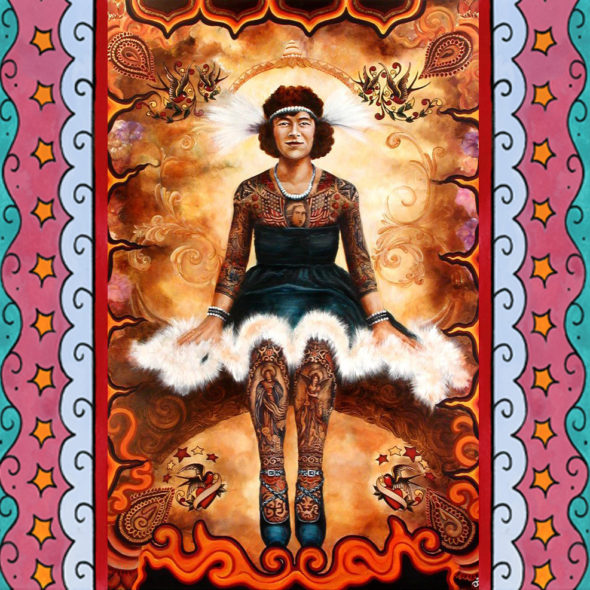 Painting by Titine Leu
Painting by Titine Leu

